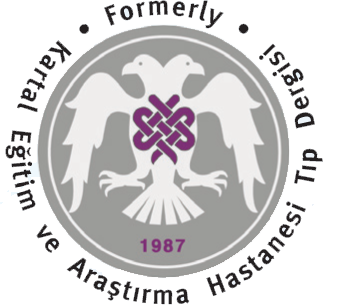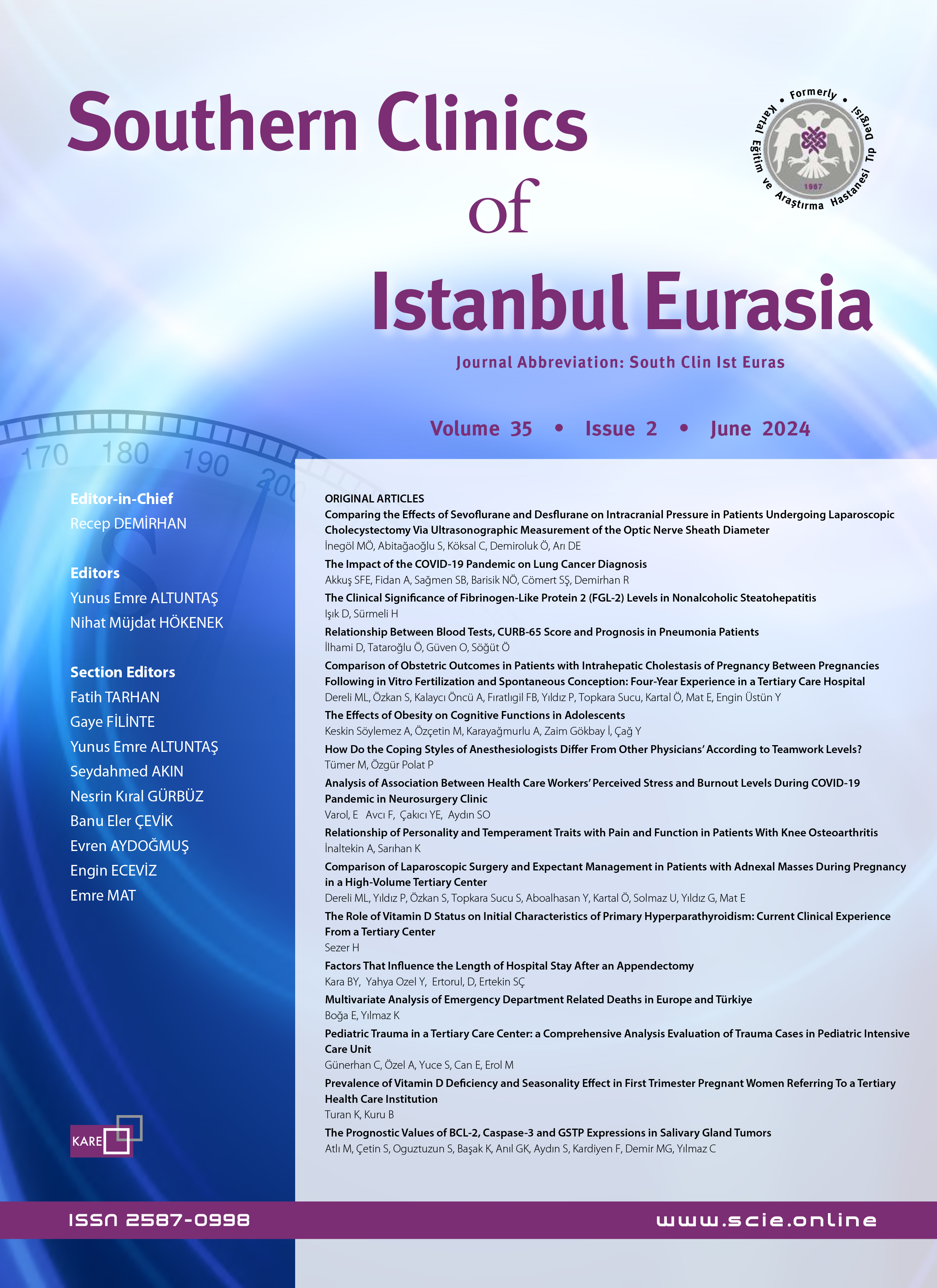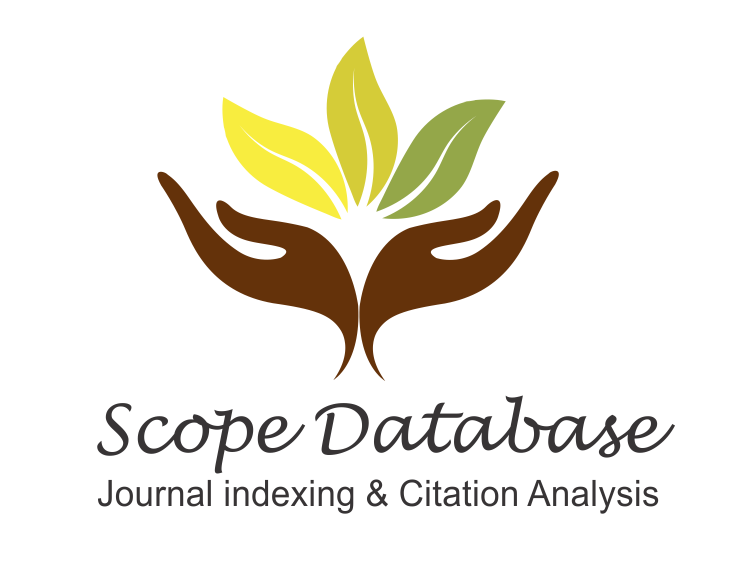Volume: 4 Issue: 1 - 1993
| RESEARCH ARTICLE | |
| 1. | THE RELATIONSHIP BETWEEN KIDNEY STONES AND OSTEOPOROSIS Mesut Ünsal, Orhan Ünal, Sedat Varol Pages 345 - 348 Two hundred and seven patients, whose bone mineral densities were measured by DEXA (dual energy x-ray absorptiometry) method, were examined about renal stones. Age, parity, total body bone mineral density (TVKMD), femoral neck bone mineral density (FBKMD), lumbal spine 2-4 bone mineral density (L2-4 KMD) parameters were compared in 55 patients with renal stones and in the control group consisting of 152 patients without renal stones. Mean age and parity of patients, who have renal stones were significantly higher (p<0.05). In the whole body measurement group the patients were found to be older than the patients in the control group (p<0.05), but there were no differences between groups about pregnancy and parity (p>0.05). TVKMD was found to be lower in the renal stone group (p<0.001). In spine measurements age, pregnancy and parity were found to be significantly higher in the renal stone group (p<0.05). We couldn't find any significant difference between two groups L2-4KMD. In the femoral neck measurements age, pregnancy, parity was found significantly higher (p<0.05) and FBKMD was found significantly lover (p<0.05) in the renal stone group. The cause of TVKMD, L2-4, FBKMD measurement differences between the renal stone group and the control group were discussed. |
| 2. | CEREBROSPINAL ALPHA1 ANTITRYPSIN LEVELS IN PATIENTS WITH MENINGITIS Nadir Girit, Gülnur Tokuç, Ahmet Özgüner, Serdar Özer Pages 349 - 351 We measured the CSF (cerebrospinal fluid) levels of alfa1-antitrypsin, one of the acute phase reactants, in 25 children with bacterial meningitis, seven with aseptic meningitis, and eight without any infection, in order to detect the CSF levels and the importance of alfa1-antitrypsin in the differential diagnosis of bacterial and aseptic meningitis, and we found high levels in bacterial meningitis that are statistically significant. |
| 3. | INTRAVENOUS STREPTOKINASE ADMINISTRATION AND ITS IMPORTANCE IN ACUTE MYOCARDIAL INFARCTION Birsel Kavaklı, Özgür Şamilgil, Ali Yayla, Selahattin Ertürk Pages 352 - 356 In the previous decade thrombolytic agents were used routinely in acute myocardial infarction (AMI). In several large-scale randomized controlled trials, an important survival advantage has been obtained. This study was performed to evaluate the feasibility of streptokinase (SKZ) in state hospitals in Turkey. These agents had been used only in cardiology centers. Frequent ventricular extrasystoles, supraventricular tachycardia, bradycardia, A-V block, bundle branches or fascicular blocks, post-myocardial infarction, angina were observed more in the control group (25 cases) compared to the streptokinase group (23 cases) which had the same risk factors and general features. These results were statistically significant. Congestive heart failure occurred 8.6% in the SKZ group, compared to 16% in the control group; mortality was 4% and 16% respectively, but they were statistically in significant. Bundle branch blocks disappeared in five of the five patients treated with SKZ. In the coronary angiographies performed in the 2. month, infarct-related coronary artery was found open in six of the six patients in SKZ group. in conclusion, SKZ proved to be a very potent, efficient, useful, relatively cheap and easily administerable agent for AMI patients in state hospitals. |
| 4. | HIV-1 INFECTION IN ISTANBUL O Şadi Yenen, Güler Yayli, Fahri Aslantürk, Suat Selçuk, Selim Badur Pages 357 - 359 We planned this survey to investigate the route of transmission and the geographical origin of the first 100 HIV-1 infected cases reported in İstanbul, Turkey. Between November 1985 and November 1990, we evaluated 100 cases. Nineteen cases including 15 males, three females and one child developed AIDS and of these, 17 died. These cases were classified as five blood and blood product recipients, four intravenous drug abusers, three homosexual men, five heterosexuals, one child-to-mother and one case both homosexual and infravenous drug abuser man. Ten of them had lived abroad at least for six months, in the transfusion recipient group, three cases received transfusion in foreign. countries. A child and a man received imported blood products. Four intravenous drug abusers shared needles when abroad. in one of these cases, the patient's husband had worked in an European country for many years. The other case was a homosexual tourist guide. Together with the remaining 81 carriers, there was a foreign connection in every HIV-1 infection seen in İstanbul. HIV-1 infection in Turkey is introduced by incoming foreign tourists, workers coming back from abroad and imported but unchecked blood products. Thus, HIV-1 is not an indigenous but an imported virus in İstanbul, Turkey. |
| 5. | THE USE OF METHYLPREDNISOLONE AND SALBUTAMOL IN ACUTE BRONCHIOLITIS Şükrü T Cura, Gülnur Tokuç, Ahmet Özgüner, Yasemin Ekmekçioğlu, Kamil Esmer Pages 360 - 365 There is not enough data about the benefits of beta-adrenerjic agonists for the initial treatment of acute bronchiolitis in infants less than 24 months of age. Also, even there are some studies showing that steroid treatment is useless, it is necessary to study its place in the management of acute bronchiolitis because steroids are advised to be used in the first steps of asthma treatment. A placebo controlled randomised study were planned to check out the efficiency of salbutamol sulphate on 49 children with acute bronchiolitis. The placebo group was also divided into two and methyl prednisolone was used in one of them. The patients were evaluated by the respiratory distress score (RdS) at the beginning and after 20-25 minutes of each treatment. Also, arteriel blood gas levels were measured at the beginning and at the end of the therapy. Sedimentation rate, quantitative CRP, and hemograms were studied. As a result of the study, we found that nebulised salbutamol and methyl predisolone is not superior to placebo in the treatment of acute brochiolitis. |
| 6. | TRAUMATIC INJURIES OF THE DIAPHRAGM Yıldırım Gülhan, Zeki Memiş, Ayhan Çevik, Necmi Kurt, Mustafa Gülmen Pages 366 - 368 Between January l, 1990 and June 30, 1993, 32 diaphragmatic injury cases were examined to emphasize the importance of diaphragmatic rupture in multiple traumatic patients retrospectively in surgery clinics of Kartal Education and Research Hospital. 56.2% of cases were blunt trauma (traffic accident), 40.6% cases were penetrating wounds, 3.2% were gun-shot wounds. Left and right diaphragm were injured 56.2% and 43.8% respectively. The most injured organs to gother with the diaphragm were liver and spleen. Preoperative diagnostic value of PA chest X-rays was 18.8%, Postoperative complications were 14,4% and two patients were reoperated. Mortality rate was 18.8% and in all of them there were two or more organ injuries together with the diaphragm. |



















